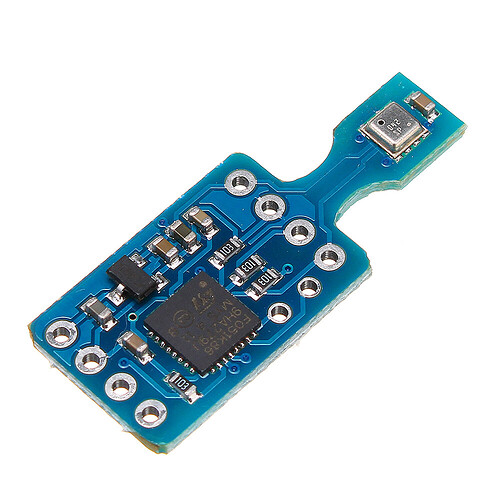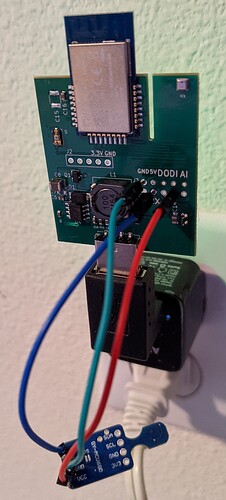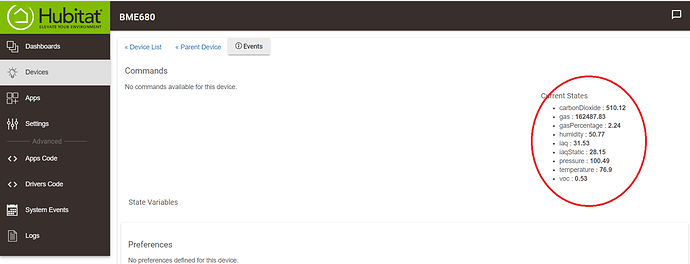Hi Everyone,
I just want to update my progress on BME680. I have made progress on the following.
I have found a BME680 module that already come with an MCU that is capable to run Bosch close source library.
I am able to modify the firmware to send data that is compatible to my Environment Sensor through serial port. My Environment Sensor has serial port expansion. The module is know as GY-MCU680V1 in case you would like to get one yourself.
Here is how it looked like in action on my rough test setup. Just a reminder, The setup on the picture is just for testing. I may create a PCB adapter in its final form to attach to Environment Sensor.
Here is rough DTH that I just made.
I am a new user of BME680 just like you. Let me share my impression. BME680 has 4 physical sensors (temp, humidity, pressure and gas). These 4 sensors are as solid as it comes.
Bosch build a library that generate estimation of IAQ (indoor Air quality), CO2 and VOC. These are not a dedicated hardware that detect CO2 for example. Bosch use the 4 physical sensor values and use their internal algorithm to say what is the estimated CO2 in the area. They also do the same with IAQ and VOC. Are these estimation accurate? I do not know. But, I have a feeling that it is just an estimation.
You can depend on the gas measurement in absolute. It is very sensitive. A gas reading does not give out a specific type of gas it detect. The Bosch software that would give the estimation for the specific type. This is the part that as a user, I would interpret it more in relative term. It is not wise to use the number that it produce as an absolute measurement value for these virtual types of reading.
Some of you have express interest on BME680. This is the fastest way to get one. Just get GY-MCU680V1 and modify the firmware. You can build the firmware using Arduino. I can share my sketch. However, my experience in building the sketch is quite labor intensive. There are no documents. The processor is based on STM32F0 which is quite well known. But, there are so many hurdle that one must get through so that the total firmware fit on that MCU. I am concern that It will be overwhelming for me to explain here on how to build the firmware and load it into the module.
If you really want to get BME680, I can help you to get a pre-built GY-MCU680V1 with the modified firmware for a small fee. There are work and shipping logistic that I will be required. Please PM me if you are interested.
At last, I want to note. With this configuration, you will have 3 sensors reading that would overlap. Out of the box, the two device would measure different value even on their such close distance. This is due to many factors. To have them reading consistently, one will need to calibrate the sensor reading. Like in my Environment Sensor, I will improve the BME680 DTH with adjustment options.
I also made progress on my work with nrf52840. I build my first Zigbee device which in the future can have BME680 on it. It may take a while to get there as I am prioritizing other use case for that project. If you have not seen what I have been working on for that project. Please take a look at this.
Thanks
Iman




